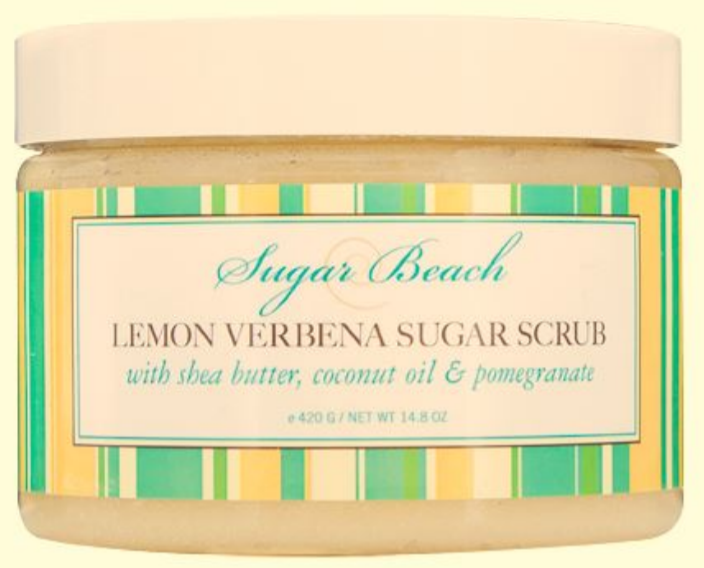Fashion Industry Insight – A Not-So-Sweet Reminder of the Importance of Trademark Clearance Searches
A proposed trademark for apparel may be blocked by a similar mark for bath and beauty products, highlighting possible relatedness of goods in different fields and the importance of trademark clearance searches.

Mocean Group LLC filed an intent-to-use application to register SUGAR BEACH (disclaiming the exclusive right to “BEACH” apart from the mark as a whole) as a trademark for “bathing suits; beach cover-ups; beachwear; body suits; bras; dresses; dresses for swimming; jogging suits; shirts; swimwear; t-shirts; tank-tops; tops as clothing; all marketed and sold primarily to retail stores offering clothing and not cosmetics.” (Emphasis added).
The applicant limited its channels of distribution to stores NOT offering cosmetics in an apparent effort to avoid a rejection based on an existing registration of the identical mark SUGAR BEACH for “bath care and body care products, namely, bath gels, bath salts, body cleansers, body creams, body lotions, body polish, body scrub, exfoliants for skin, hand cream, shower gel, and liquid hand soap” owned by Stellar Distribution Company, Registration No. 4056729, with a priority use date of July 2, 2009.
Notwithstanding the applicant’s limitation, the Examining Attorney refused registration on the ground that the applied-for mark for clothing would likely be confused with the identical registered mark for bath care and body care products.
The applicant appealed to the Trademark Trial and Appeal Board (TTAB), which affirmed the refusal of registration concentrating on the similarity of the marks, the goods, and channels of trade.
The marks, of course, were identical.
As for the goods, the TTAB stated, as it has many times before, that the degree of similarity of the goods needed for a finding of likelihood of confusion declines when the marks are identical. The Examining Attorney submitted webpages showing that goods similar to those in issue were sold under the same mark and showing that online retailers frequently sell clothing and cosmetics, including bath and body products, under the same mark. Based on this evidence, the TTAB concluded the respective goods were commercially related.
Regarding the application’s limitation of the channels of distribution “primarily to retail stores offering clothing and not cosmetics,” the TTAB called it “somewhat illusory on its face” because it left open the possibility of other channels by using the term “primarily.” Further, the TTAB said that even if there were complete exclusivity of trade channels, consumers would not be aware of that fact, nor would consumers, when encountering the products in different outlets, necessarily be prevented from believing that the products came from the same source.
Therefore, the TTAB upheld the refusal to register SUGAR BEACH for clothing items. It is possible that the applicant may appeal this decision or that the registrant may object to the applicant’s use of its mark for clothing.
In re In Mocean Group LLC, Application No. 88716250 (T.T.A.B. January 22, 2021) [not precedential].
Takeaways: Before you adopt a new fashion mark, you should arrange for appropriate searches to be made and analyzed in order to find any identical or similar marks registered, applied for, or in use.
If your mark is a secondary style name or can easily be changed (because, for example, it is used only on one product or only on a website), you may choose to rely on a knockout search of the Trademark Office database and an internet search. However, if your mark will be commercially important or cannot be easily changed, you may consider having an experienced trademark attorney conduct a more thorough search.
You should be looking not only for marks connected with the same goods or services but also with related goods or services. These would include marks for apparel, handbags, jewelry, cosmetics, and bath and body products. If the proposed mark is a designer’s name, the search probably should be widened to marks connected with other designer categories such as tableware, housewares, bed and bath linens, furniture, and home decor.
Of course, not all goods are related. For example, in the SUGAR BEACH case neither the applicant nor the TTAB mentioned the existing registration of SUGAR BEACH BAKE SHOP in plain lettering (disclaiming the exclusive right to use "SUGAR" and "BAKE SHOP") for “retail bakery shops,” Registration No. 4736051 registered May 12, 2015, by Ululani's Hawaiian Shave Ice, LLC claiming use since November 14, 2013, possibly because they determined that the services covered by this registration are unrelated.
Trademark conflicts can be expensive. If you find a mark that is possibly in conflict with your proposed mark, you may consider various possible courses of action, including:
- Limiting the specification of goods or services in your application by completely excluding any overlapping goods, services or channels of distribution, if possible.
- Seeking to obtain a consent or license from the owner of the possibly conflicting mark.
- Choosing a different mark or modifying your proposed mark to reduce the similarity with conflicting marks.
- Using your mark without seeking to register it, if you have good reason to believe confusion is unlikely in the marketplace.
For further information, contact Joel Karni Schmidt or your CLL attorney.

Partner
Email | 212.790.9244
Joel handles U.S. and international intellectual property counseling, protection and enforcement matters.
His clients include lifestyle and fashion companies, start-ups, hotels and restaurants, financial services firms, wine and food companies, game publishers, a major sports organization, global charitable organizations and foundations, and prominent artists and designers.